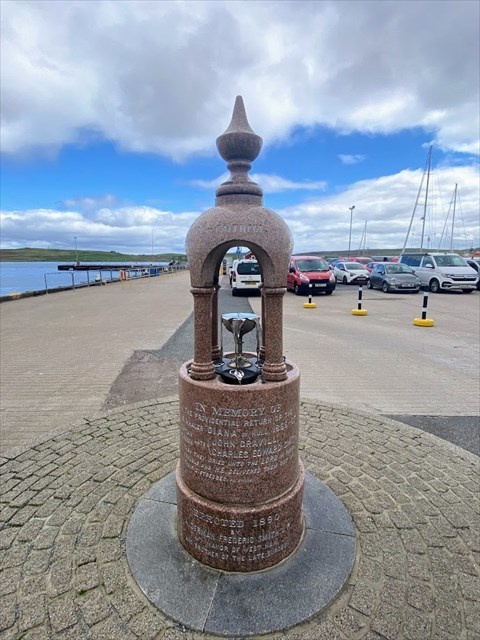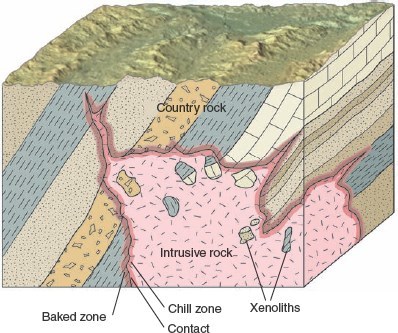
The Diana Fountain is a monument raised in tribute to the Hull whaling ship the Diana, whose crew comprised of many Shetlanders, and their harrowing tale.
In 1866 while whaling in Baffin Bay the ship became trapped in ice and remained stranded for over 6 months. Thirteen of the crew, including the captain, perished during this time, and the rest were severely malnourished.
Upon their eventual return to Shetland, the crew were in such a poor way that many of them had to rest on sheepskins to stop their bones breaking through their skin, and one sailor was inadvertently killed by his own mother - who did as many would do and fed her starving son - sadly though, his malnourished body couldn’t cope with the food and he too passes away.
The monument was raised by the brother of the ship’s doctor, whose diaries recounted the horrors of the ordeal, which were later published and we can still read today.
Sadly the fountain is no longer operational, but remains a fine memorial at the head of Victoria Pier.
The fountain, which is the subject of this EarthCache, is made from pink granite most likely Peterhead Granite. Peterhead Granite comes from Stirlinghill Quarry, near Boddam, Aberdeenshire, Scotland. Significant quarrying began in the late 18th century and continued until 16 June 1956. Peterhead Granite was a popular stone used internationally throughout the 19th Century for monuments, architectural elements and facing stone.
The ‘pink’ variety of Peterhead Granite is coloured by orthoclase feldspar, together with smoky grey quartz and black hornblende. It is one of the Caledonian ‘Newer Granites’ and was formed around 400 million years ago.
Xenolith means “foreign rock” coming from xenos (foreign) and lithos (stone) in Ancient Greek. A xenolith is a fragment of foreign rock within a host rock. Xenoliths are different from the rock they are found within. If they are similar in nature, then these rocks are called autoliths or cognate inclusions. True xenoliths are always older than their host rocks because they had to already exist as a solid rock fragment when the magma or lava around them solidified. This is not always the case with cognate inclusions.
A xenolith is often a rock that was embedded in magma as it was cooling. Magma is the molten rock beneath the Earth’s crust. If the magma rises above the Earth’s surface, for example during a volcanic eruption, it is referred to as lava. Lava is the extrusive equivalent of magma.
Igneous rocks form from magma and lava that has cooled. Xenoliths are different types of rock that are often embedded in igneous rock. Depending on the foreign rock material, the composition of the magma or lava, the temperatures, available time, and many other factors, the xenolith chemically equilibrates with the host rock to varying degrees.
Xenoliths are usually easy to recognise because they are often visibly different in composition, density and colour from the encompassing rock. Xenoliths are generally small in size, relative to the overall body of rock. However, xenoliths can range in size from single crystals (xenocrysts) to rock fragments of several metres. The large-scale inclusion of foreign rock strata at the margins of an igneous intrusion is called a roof pendant.
There are a number of possible sources for xenoliths and xenocrysts found at the Earth’s surface. Magma can intrude into pre-existing rocks (sometimes called country rocks) and as it does so, might pick up fragments of this country rock. Xenoliths can also be formed from fragments of the walls of a magma chamber or conduit. Xenoliths can also be picked up by lava during explosive volcanic eruptions, or can be picked up by lava as it flows along Earth’s surface. These fragments, trapped in the magma or lava but not melting into it, become xenoliths.

A visual representation, if that makes it any clearer!
As magma erupts or flows from the Earth’s surface, it is cooled by exposure to the atmosphere or water. Lava cools fairly quickly, and different types of igneous rocks are formed. Xenoliths and xenocrysts are affected by temperature. A xenolith may lose its unique qualities if it melts into the surrounding magma. As it cools, the material may cease being a xenolith and instead become a metamorphic rock. Metamorphic rock are rocks are formed inside the Earth by temperature and pressure changes that affect existing rocks, (often igneous or sedimentary.)
Xenoliths and xenocrysts are often identified by the names of the two rock types involved. For example, a periodite xenolith in a basaltic lava flow, is a periodite fragment embedded in basalt rock.
 Xenoliths in granite
Xenoliths in granite
Xenoliths and xenocrysts provide valuable information about the geology of the Earth’s crust and mantle. Xenoliths can give clues about the origin and evolution of the host rock. For example, when an igneous rock contains a xenolith, geologists know that at some point the magma or lava that cooled to form that igneous rock was in contact with the foreign rock. Xenoliths are also important because they can allow geologists to sample and study rocks which are difficult to access. For example, the material in the Earth’s mantle is not generally exposed at Earth’s surface, (except at ophiolites,) so xenoliths can give evidence about the composition of Earth’s mantle. Some xenoliths come from very deep within the Earth. For example, diamonds are formed at high pressures and temperatures, very deep within the Earth, and are then brought to the Earth’s surface as xenocrysts in kimberlite rock. Through xenoliths and xenocrysts, geologists can learn about temperature, pressure, constriction and movement within the Earth's surface.
Xenocrysts can also be formed by the mixing of dissimilar magmas, and foreign material can be incorporated late into the magma with minimal contamination. The fate of assimilated xenocrysts depend on their composition, as well as that of the host rock.
Xenoliths most often appear as fragments of foreign rock in igneous rocks. However, xenoliths can also appear in sedimentary rocks, or even meteorites, that have been involved in collision events outside of the Earth’s atmosphere.
________________________________________
To log this cache, please visit the published co-ordinates and answer the questions below. Once you have obtained the answers, please send them to us via e-mail or the Geocaching Message Centre. You are free to log your find once you have contacted us. You don't have to wait for a reply. If there are any questions about your answers, we will get back to you.
Logs without answers or photo will be deleted. Please don’t include close up pictures in your logs that may answer the questions.
Identify the xenolith in the fountain. With your back to the harbour look close to the base of the fountain?
1. Describe the xenolith length and width and rough shape and colour
2. What type of rock hosts the xenolith, (for example, igneous, sedimentary,or metamorphic?)’
3. Which do you think is older, the rock that makes up the pillar or the xenolith within it?
4. Take a photo of yourself/mascot and/or your GPS with the fountain, (Not the xenolith side) post this with your log. Any logs without a photo will be deleted)
